Chicago's Most Memorable Stories Of 2016
By Staff in News on Jan 2, 2017 3:00PM
Annus horribilis in so many ways, but annus mirabilis in a few, 2016 is finally gone, but it won't be so quickly forgotten. From government stalemates to baseball contend-ability, from endemic institutional woes to Chicago's hip-hop ascent, there's a sense of past-is-prologue to the year's standout stories. While we wait for time to tell, here's a look back at what jumped out.
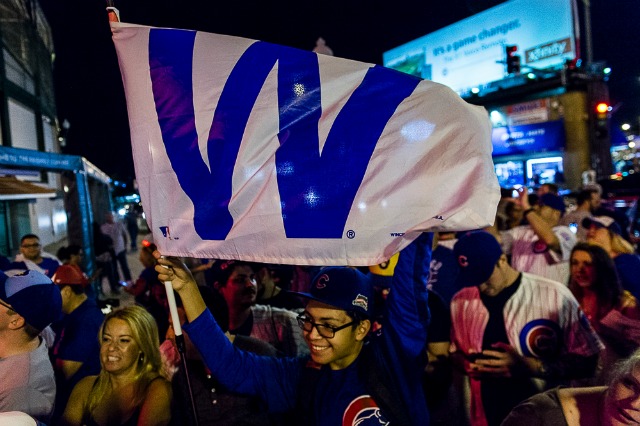
Photo: Tyler LaRiviere
The Lovable Losers (Finally) Lovably Won
It’s difficult to write about the Cubs’ historic breaking of the curse without coming across as hyperbolic. Truth is, the 2016 World Series Champion Cubs were themselves an overstatement. They really did end the most infamous drought in professional sports history on what really was the best baseball game in modern history. Plus the team is basically as young as it is good—and it was historically good—well positioning it for a potential dynasty. These Cubbies were also the perfect marriage old school and new, the culmination of sports as arena for both enlightened analytics and romantic narrative. And when the romance was at its ripest—the Wrigley Field name wall, the long-suffering elderly lifers, Bill Murray as overcome fan surrogate, the record-breaking rally—it felt truly once in a lifetime.—Stephen Gossett
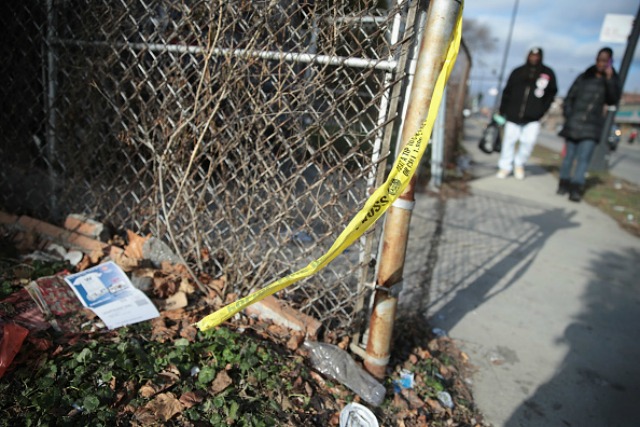
Getty Images / Photo: Scott Olson
Chicago Violence, Its narrative and the Trump-ian Spin
Chicago ended the year with more than 750 homicides, the deadliest total for the city in almost 20 years. There were high-profile victims: innocent bystander Nykea Aldridge, the cousin of Bulls star Dwyane Wade, and Javon Wilson, the 15-year-old grandson of Rep. Danny Davis who police say was killed in his home after an argument over shoes. But the vast majority of victims didn’t make national headlines; the sheer volume of them did however, whether it was being compared to less violent coastal cities or skewing national data.
As notable as the death toll was, so too was the narrative that swirled around it—and what was omitted from that narrative. Far too few prescriptions focused on what gang expert and professor of criminology at UIC John Hagedorn identified when we spoke at year’s end: stabilizing underserved communities that have been damaged by racism and underinvestment. Meanwhile, Superintendent Eddie Johnson regularly argued for tougher sentencing, and Mayor Rahm Emanuel pledged to hire some 1000 more police officers. (Additional detectives could help Chicago’s low homicide clearance rate; but activist communities have argued in favor of police divestment, perhaps nowhere more convincingly than at this summer’s inspiring Homan Square site.)
But the most muddled interpretation was also loudest. Following in a long tradition of using Chicago violence as a conservative talking point, President-elect Donald Trump alternately called for stop-and-frisk here, argued that he could fix Chicago crime in one week and compared the city to a war-torn country during a presidential debate.—Stephen Gossett

Getty Images; Photo: Mark Wilson
Illinois Still Never Passed a Budget
Illinois began the year without a fully-funded state budget and will begin 2017 exactly the same way. In 2015, Governor Bruce Rauner demanded Illinois lawmakers pass a package of “reforms” which has changed slightly over time, but still includes a property tax freeze, term limits, and changes to workers’ compensation, before he would sign any budget proposed to him. Meanwhile, state lawmakers rejected much of his proposed “turnaround agenda,” which had less to do with the day to day financial operation of state government and more to do with creating a more “pro-business” environment.
Rauner’s critics likened the the budget impasse to a hostage situation, as agencies and services that rely on state funding went unpaid for months, forcing some to make cuts in staff and services and others to close altogether. In June, Illinois entered its second year without a state budget, with no clear end to the impasse in sight. Both Rauner and his chief rival, House Speaker Michael Madigan, spent the the majority of their time sniping at each other in the press with very well-worn talking points.
In July, lawmakers and the governor were able to come to a short-term agreement, passing a stopgap that no one really celebrated to get Illinois politicians through the November elections. But that stopgap expires like a half full glass of champagne left overnight on New Year’s Eve. As of January 1st, the state no longer has spending authority to provide for most day-to-day operations, human services or higher education.—Aaron Cynic

Rahm Emanuel’s Emails and Police Accountability
In addition to bookending the year without a state budget, we also opened and closed 2016 reading reading a tome of information from Rahm Emanuel.
Open records requests forced the Emanuel administration to release some 3,000 pages of communications regarding the killing of Laquan McDonald by Chicago Police in October of 2014. McDonald’s shooting was one of several high-profile police shootings that took place over the past few years which helped spur calls for Emanuel’s resignation and the firing of Police Superintendent Garry McCarthy in late 2015, a Department of Justice investigation, and the transformation of the Independent Police Review Authority into the mayoral appointed Civilian Office of Police Accountability, along with scores of calls for other accountability measures for the Chicago Police.
While he weathered much of that storm last year through the early months of this year, it’s hard to call 2016 a “comeback” year for Emanuel, particularly after Chicagoans got another information dump as we closed it out.
As part of a settlement with the Better Government Association—which along with the Tribune has sued for emails the mayor sent regarding city business on a private email server—some 2,000 pages of communications dating as far back as 2012 were released in December. In them, he pats himself on the back for gutting health care for retired city workers, legal consultants push for privatizing public housing, Midway airport and portions City parks, and plenty of some of his top donors make demands and give him advice. He also even gives a slight window into his bromance with Governor Rauner, telling him “I love you a lot” before giving saying he’ll give a tax break to the hotel industry.—Aaron Cynic
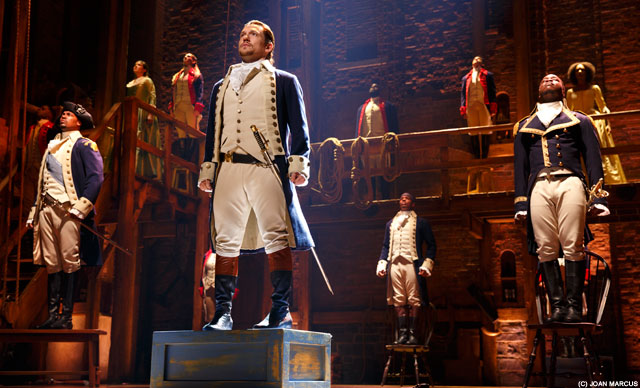
'Hamilton' / Courtesy of Broadway in Chicago
Hamilton Went Smashin' Every Expectation and Too Much Light Went Dark
After years of suffering “is theatre dead?” think pieces, we got the most resounding “no” in recent memory when Lin-Manuel Miranda’s megalith musical splashed into Chicago, retaining all of its cultural, critical and commercial zeitgeist fever pitch all the way. The buildup was incredible, and the gauntlet for tickets was nearly as memorable as the show itself. But even after the crazy side stories—Alexander Camelton, the cast’s “Go Cubs Go” curtain call, and the drunk and disruptive pro-Trump audience member that flew off the handle after the famous “Immigrants. We get the job done” line—it’s the show itself and it’s radical empathy that will stand out.
By the time it arrived here, Hamilton’s success was virtually assured, but few could have seen the other major theatre story coming: Greg Allen’s yanking of Too Much Light Makes the Baby Go Blind, one of Chicago’s longest-running, most iconic productions, from the company he founded, Neo-Futurists. Allen claimed he intended to tailor the a new version into an explicitly socially activist affair, but former ensemble members argued that such a bent is already deeply established and that Allen was suspended in part due to abuses of power. What happens next has the potential to land in the post-2017 roundup.—Stephen Gossett
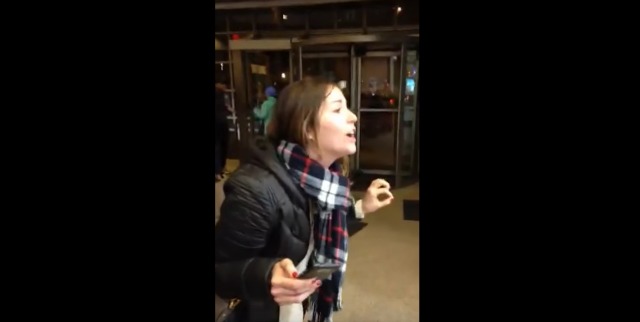
New Chicago Lore: Brianna & Jaelin White and "The Michaels Ranter"
Were Brianna and Jaelin important? Was the Michaels ranter a major story? In the long run, no, of course not. But not all memorable moments are historical watersheds. These WTF moments of viral-video infamy will likely fade into the dustbin of digital history for much of the world at large, but they feel like instant local lore here, along the lines of, say, Burger Delights or the Max Headroom hack.
Bri & Jae White (actual last name) came first, back in August, when the vlogger couple recounted how they spent a grand total of one day in “sketchy” Edgewater before hightailing back to Phoenix. In the couple’s defense, Jaelin was punched in an assault, but the couple’s bourgeois self-caricature was so cringingly hysterical (or maybe just cringe-worthy) that it even inspired a (not bad) walking tour. The Michael’s ranter, however, was much worse. If you somehow forgot, the woman (who had a documented history of similar behavior) was filmed going on a 45-minute tirade at the Lakeview craft store, during which she called black clerks “animals.” Sometimes bigotry wears expensive scarves.—Stephen Gossett
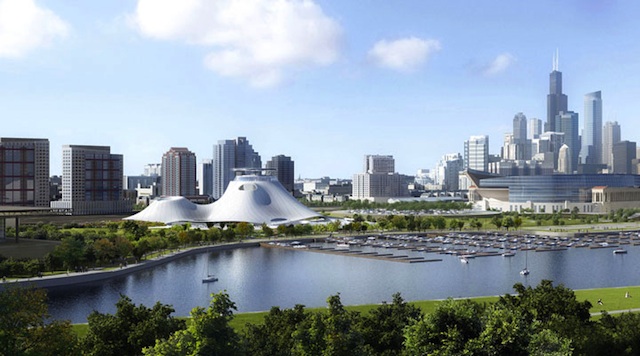
Latest design (Lucas Museum of Narrative Art)
The Long Flirt—Then Pass—of the Lucas Museum
The biggest Star Wars-related drama in Chicago had nothing to do with the release of Rogue One. The fractious, months-long back-and-forth between director George Lucas—along with the local political and cultural forces who backed his bid to build the Lucas Museum of Narrative Art on lakefront land—and the Friends of the Park—who argued that alternative sites should’ve been considered—ultimately fizzled to nothing. After several proposed plan changes and a lawsuit by FOTP, Lucas withdrew Chicago from consideration in late June.
The preservationists were made out as obstructionists (Friends of the Parking Lot, anyone?) while defenders thought Lucas’ lakefront-or-bust insistence was unreasonable and missed an opportunity to spread the city’s cultural institutions beyond the concentrated museum campus. But before Lucas ended up going’ back to Cali, he ignited a hot debate about public space and private investment that will surely be revisited again before long.—Stephen Gossett
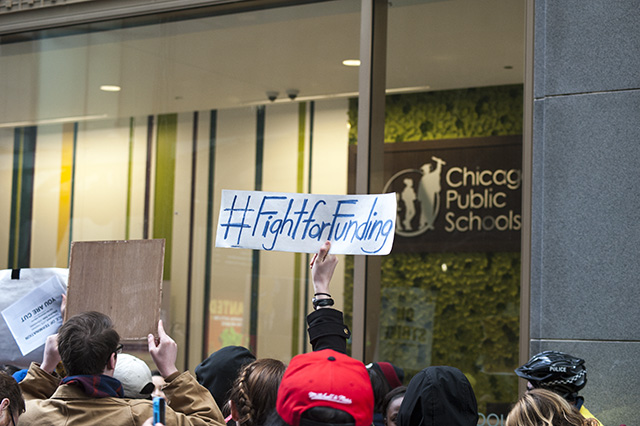
Demonstrators in front of Chicago Public Schools headquarters on Madison Street during the Chicago Teachers Union "day of action" on April 1, 2016. Photo by Aaron Cynic.
CTU Comes to an Agreement with CPS
Chicago nearly saw its second major teacher’s strike within a decade, which was narrowly averted at the literal 11th hour.
Chicago Public Schools and the Chicago Teachers Union were already at odds early in the year over contract negotiations that had been taking place since their contract expired in 2015. Then, the District announced massive cuts, several rounds of layoffs and three unpaid furlough days, prompting the union to stage a one-day walkout in April.
“We are dying the death of a thousand cuts,” said CTU President Karen Lewis in a press conference at the time.
The walkout brought together a broad-based coalition of activists, unions and community groups calling for increased funding for education along with social services with progressive revenue solutions to fund them and help balance the District’s budget, rather than relying on more cuts. Groups also slammed Mayor Rahm Emanuel and Gov. Bruce Rauner, who have often rejected revenue ideas in favor of austerity budget proposals, which critics say advantage the wealthy over average citizens.
But despite the war of words between many interested parties—which even seemed to put a light strain on the bromance between Rahm Emanuel and Bruce Rauner when Emanuel likened the governor to Donald Trump—CPS opened its doors to students on time when the school year began.
The agreement lasts for four years from the day the last contract expired and preserved the 7 percent pension pick up at current levels for current teachers and paraprofessional and school-related personnel. It also provided aides to some over-enrolled K-2 classes and preserved some cost of living adjustments. In October, Emanuel decided to agree to at least one of the revenue proposals, taking $175 million from tax-increment financing funding.—Aaron Cynic
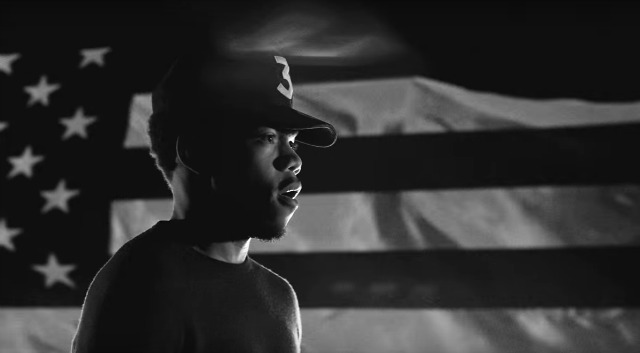
Screenshot / Chance the Rapper in "Unlimited Together"
Chance the Rapper Was Unstoppable And Everywhere
Chancelor Bennett, a.k.a. Chance the Rapper, has been on a pretty sharp upward career trajectory ever since his debut mixtape, 10 Day, was released in 2012. By any standards, 2016 saw Chance's output and fame rising at a speed that would leave most artists in a state of a creative breakdown. Amazingly, Chance has handled 2016 with remarkable grace and aplomb. In a year of division it seems everybody loves Chance.
After his debut as Saturday Night Live's first unsigned musical guest at the close of 2015, Chance kept a relatively low profile—well, low for Chance—releasing new tracks from his highly anticipated third mixtape through various late night television appearances, music videos and singles. Chance also took a moment to get real amidst the anticipation and call out Spike Lee's Chiraq, for being a "sexist... racist" movie.
In May, Chance finally released that mixtape, a month later than people had hoped, to high expectations, and then shattered those expectations with another artistic leap forward. Chance's Chicago idol Kanye West released an artistically game-changing paean to the spiritual and gospel roots of hip-hop a few months before, but Chance's Coloring Book brought spiritual awareness and optimistic progress in hip-hop to a whole new level.
Chance held a number of high profile concerts in Chicago, starting with a headlining set at The Chicago Theatre in April and surprise appearance at The Taste Of Chicago in July and a November get out the vote event in Grant Park. But all of these paled in comparison to Magnificent Coloring Day, Chance's exuberant, inaugural music festival held in November featuring a parade of high profile appearances, including a couple songs with Kanye West.
Chance closed out the year with seven Grammy nominations without being tied to an actual record label, and his second performance on Saturday Night Live (this time including a memorable appearance appearance in a pretty amazing sketch). Oh, and Chance dropped a surprise holiday mixtape with Jeremih with just days left in 2016.
And this is only a brief summary of Chance's year. We didn't even get to countless guest appearances, his community, fight against ticket scalpers, delightful run in with Beyoncé, or even his amazing candy bar commercial! And all signs point to Chance not slowing down in 2017.—Jim Kopeny / Tankboy